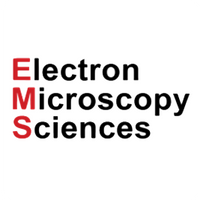
- Collections
EMS grid staining plate
The EMS Staining plate for Electron Microscopy was developed by Dr. Miguel Berrios, at SUNY at Stony Brook, Dept of Pharmacological Sciences, School of Medicine, New York. Ideal for chemical etching process, antibody incubations and final staining with heavy metal salts, each is performed in the small cone-shaped wells on the EMS staining plate.
The EMS Staining Plate for electron microscopy post-embedding staining and immunohistochemistry offers several advantages over all other commercially available staining devices. The base has two notches to serve for orientation and a 1.5mm x 4.4mm deep lip where the cover rests. Each well is an inverted cone 7mm in diameter and 2mm deep. Grids either float or rest at the bottom of each well. The wells allow incubation of a grid in 12-60 microliters of solution without reagent loss due to adsorption or cross contamination, even when the plate is tilted up at 70°. Due to the shape of the well, the flat surface of the grids never come into contact with the walls of the well, both facilitating sample staining and grid recovery.
Advantages:
- Plates base plate is a solid piece of chemical-resistant silicone, resistant to all chemicals and solvents
- During manipulation of the grids in the well there is no risk of damaging the fine points of the tweezers
- Size: 127.5mm long, 85.5mm wide, 11.5mm thick
- 96 cone-shaped wells organised (like the microtitration plate) in parallel rows of eight, using the lid of a 96-well Falcon 3072 Microtest III Plate as a cover
| Code | Pack Size | Availability | Price | Updated: 28-11-2025 |
|---|---|---|---|---|
| EMS71568 | Each | 0 in stock (?) | $85.00 AUD |
* Ordering Schedule
This item is available for back-order where 0 stock is listed.
We order from this manufacturer weekly, with an estimated lead time of 3 weeks.
This is the estimated lead time, based on the average time taken previously to fill orders from this particular supplier.
Lead times are from when we receive your order until when we fill your order. For delivery times, please see shipping information below.
